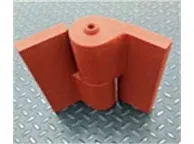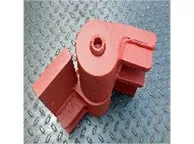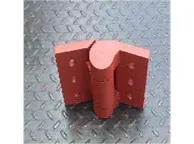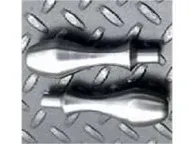Hinges are one of the most important parts of any door. They allow the door to open and close smoothly, and they also help to keep the door securely in place. Hinges are used in various applications, such as in doors, gates, and access covers. They may not seem like a big deal, but they play a very significant role in our lives. Next time you open a door, take a moment to appreciate the hinges that make it possible. Overall, hinges are a crucial part of door design and function. They may not be the most exciting part of a door, but they are certainly one of the most important. Let us understand more about the working and the proper installation procedures of door hinges in this post.
How Does a Hinge Work?
A hinge is a mechanical device that allows two objects to rotate relative to each other about an axis of rotation. The most common type of hinge is the door hinge, which is used to attach a door to a frame. Hinges work by rotating about an axis, which allows the two objects that are attached to the hinge to move relative to each other. The axis of rotation can be either internal or external to the hinge.
How Significant is Installing the Hinges Properly?
One might think that as long as the door is hung on the correct sized hinge, it is safe. However, there is a significant difference between a door that is hung on properly installed hinges and one that is not. Hinges that are not installed properly will cause excess load on the hinge bearings and cause premature hinge failure. Also, it is very important that the frame (jamb) is square. A door that is properly hung on the correct size hinges and on a square frame will be easy to open and close and will also be less likely to slam causing damage the hinges over time. Hinges that are installed properly will provide years of trouble-free use.
Steps Involved in Hinge Installation
Installing hinges may seem like a daunting task, but it is actually quite simple. Just follow these steps and you will have your hinges installed in no time.
- Choose the Right Types and Determine the Correct Location: Before you start the hinge installation process, it is important that you have the correct hinges for your door. There are different types of hinges, so you will need to select the ones that are best suited for your door. Our most popular types are full surface, half mortise and our barrel type hinge. Once you have the correct hinge type and size, you can begin the installation process. The first step is to place the hinges in the correct location. Location is best when the hinges are 6” from the top and bottom of the door or gate because of the radial load is best distributed.
- Mounting the hinges: Now that the hinge position has been decided, its time to lay the hinges on the door and frame and either drill and tap the holes or weld the hinges in place. When welding the hinges, care must be taken not to get the temperature of the hinge barrel over 200 degrees F. Overheating could cause damage to the bearings
Proper Installation Procedures
- A minimum of 2 hinges (1 pair) are used per door.
- Door weight or thrust load shall not exceed the thrust capacity of one hinge.
- Minimum thread engagement into reinforcing member shall be equal to bolt diameter.
- For weld on applications, the minimum fillet weld size shall be as shown below and be full length on three sides of each leaf:
**1/4″ Fillet weld on 2500, 2875 and 2100 **
**1/2″ Fillet weld on 2125, 2150 and 2200 **
**3/4″ Fillet weld on 2250**
**1 1/4″ Fillet weld on 3000** - Weld interpass temperature at the hinge barrel shall not exceed 200ºF.
- The hinges are installed without inducing “hinge bind”.
- Adequate load distribution between hinges is necessary to obtain the longest hinge life and highest safety level.
- For hinges with a set screw for adjustment, maximum vertical adjustment of the hinges is 1/8″.
By following these tips, you can ensure the longest life and safest operation of the hinges.











